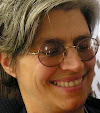Seven years ago today, my son came home to live with me. He was 9 months old; we had been visiting for about 3 weeks. Every year on February 14th we celebrate Family Day. We go out to dinner early, so we can avoid those hordes of people celebrating that other holiday that comes on February 14th. ;^) (We have a thing about multi-tasking holidays - he was born on Mother's Day and we finalized the adoption on my birthday.)
When my son came home to live with me, his foster mom gave me a big suitcase full of his clothes and toys, and a few books.
Goodnight, Baby, by Cheryl Hudson of Just Us Books, was one of those books. I memorized the whole thing and recited it to him every night when I put him to bed. I still get shivers when I recite it:
Baby's getting sleepy.
You had such a busy day.
You played with toys
And made much noise
With friends who came to play.
You splashed and sang
Some bath-time songs,
And made them sound just right.
And now a story ends your day.
It's time to say good night.
Good night, Baby,
Sleep tight.
There was also one of those little books with a photo of a baby on each page, each one with a different skin color. In my experience, those books of baby faces are the first books babies really look at.
Before I adopted my son, I had been collecting books with stories of strong girls and women. When I became a mama, I immediately began expanding my collection, and spent a lot of time at Cody's Books looking for good ones. (Sadly, Cody's is gone now...) One of the first ones I found,
Baby Dance, became my all-time favorite board book. The text comes from
a poem by Ann Taylor, written in the 1800's. It's been changed some, and I like this version from our book better than the original:
Hush little baby, don't you cry
Hush little baby, Mama's nearby.
Dance, little baby,
move to and fro
Coo and crow, baby,
there you go.
Up to the ceiling,
down to the ground
Backward, forward,
'round and 'round.
Dance, little baby,
dance and sing
Dance along, sing along
rig-a-ding-ding!
The illustrations by Marjorie van Heerden are so luscious, and the story they tell warms my heart. Mama's napping on the sofa, and Daddy's holding the baby, who has a tear in her eye. Daddy dances the baby around, she cheers up, and at the end Mama wakes up, and Baby and Momma are reaching out to one another.

We found
Billy and Belle, by Sarah Garland, more recently. It's about an interracial family (Black dad, white mum) in England. Belle, about 3, comes to school with Billy, because Mum is going to the hospital to have a baby. My son loves this book, perhaps because it's one of the few we have that shows a boy like him with a white mama.
In
Do Like Kyla, by Angela Johnson, the little sister tells of her day. As they

wake up, dress, and walk through the snow to the corner store, she watches and then, "I do like Kyla." At the end, Kyla follows her lead. In James Ransome's paintings, you can just see how hard she's working at getting dressed and walking through the snow. But she keeps up with Kyla just the same.
If you've been reading along as I write these, you may remember James Ransome did the illustrations in
Sweet Clara and the Freedom Quilt, too. I just now looked at
his website, and he's done lots more! His website also led me to an intriguing project he's involved in. Children's book authors and illustrators are collaborating on a story, started by Jon Scieszka, called
The Exquisite Corpse, in which each author writes one chapter, and no one knows what will come next.
























